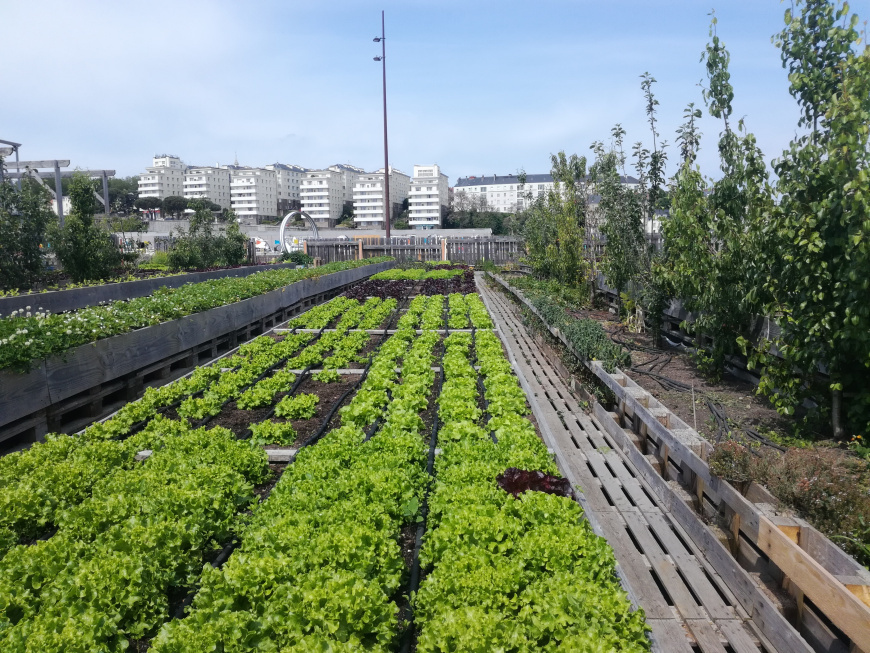3 Simple Techniques For City Blooming
3 Simple Techniques For City Blooming
Blog Article
All about City Blooming
Table of ContentsThe Of City BloomingThe Facts About City Blooming RevealedCity Blooming Things To Know Before You BuyGetting The City Blooming To WorkSee This Report on City Blooming
Interested in expanding food for sale in the City of Chicago? Below is a listing of often asked inquiries pertaining to the regulations and regulations that growers must consider when preparing an urban agriculture project.
The zoning change does not change any kind of various other codes handling composting, building permits, acquiring or leasing City owned residential property, service licenses or environmental contamination. There are existing codes that manage these issues and they stay in full impact and might be relevant to your project. Community yards are generally had or managed by public entities, public organizations or community-based organizations and maintained by volunteers.
Urban ranches expand food that is planned to be sold, either on a nonprofit or for-profit basis. Due to their industrial function, urban ranches call for a company certificate.
Examine This Report on City Blooming
The amount of compost material can not surpass 25 cubic yards at any type of provided time according to the requirements in 7-28-715 of the City's Municipal Code. Due to the fact that the soil at many new garden websites requires changing, compost, dirt, timber chips, or various other products can be obtained to build or improve the growing room.

If a structure permit is called for then the hoophouse will certainly be taken into consideration an accessory building. You can learn even more about the structure license demands by contacting the Division of Buildings. The 25,000-square-foot size limit is meant to protect against a single community yard from controling a given block or interfering with the block's existing residential or business personality.
The restriction does not relate to yards situated in Public Open Room (POS) areas. Can there be even more than one community garden that is 25,000 square feet on a solitary block? Yes. The size limitation applies to specific yards, not to individual blocks. No. Secure fencing is not called for, however, yards that have big parking locations might be called for to mount fence or other landscaping functions.
The Best Guide To City Blooming
B1 & B2 districts need that all industrial use activities be conducted inside. R districts restrict commercial task. The policies reflect the objective and intent of the Zoning Code. Is fence required for metropolitan ranches? Yes. Fences may be called for, along with landscape design and screening, for specific parking areas and outside work or storage locations relying on place and the certain activity occurring.
Yes. Urban farms need structure permits and zoning authorizations prior to construction. Other forms of city testimonial may be required relying on specific structures, tasks, dimension, landscape design, licensing, public heath and stormwater management concerns. A number of these needs are recognized in the task style or permitting process, however, the candidate may be accountable to individually recognize specific licenses or permits that might be called for.
The Division of Business Matters and Customer Defense can help establish the particular kind of company license that's called for. Off road vehicle parking is needed for most business jobs in Chicago. The required number of auto parking areas is based on the number of employees functioning on site and not the find out here now square video footage of the expanding room.
Fascination About City Blooming

A city ranch can market garden compost product produced on site, however, the operation has to abide with the policies in 7-28-715 of the Chicago Municipal Code. Aquaponic systems are permitted inside your home on urban ranches in lots of zoning areas.
Approximately five hives or colonies of honey bees might be maintained as an accessory usage. Nonetheless, beekeepers have to register with the Illinois Division of Agriculture. For more details about the recommended zoning amendment you might call the Department of Housing and Economic Advancement, Bureau of Planning and Zoning at 312.744.8563.
, which takes area in country areas at the edge of suburbs.
Fascination About City Blooming
It can include a motion of natural growers, "foodies" and "locavores", who seek to form social media networks started on a shared principles of nature and neighborhood holism. These networks can establish using official institutional support, coming to be incorporated right into local town as a "change town" activity for lasting urban advancement.
In either case, the much more direct access to fresh veggie, fruit, and meat products that may be know with metropolitan agriculture can improve food safety and food safety and security while lowering food miles, leading to reduced greenhouse gas exhausts, therefore adding to climate adjustment mitigation. A few of the very first evidence of urban farming originates from Mesopotamia.
Report this page